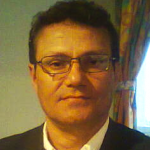 Fifty five years ago, archaeologist, engineer and geologist Kenneth Lee discovered the ruins of an ancient civilization in the region of El Beni, in the northeast of Bolivia. The sophisticated technologies that were revealed by the excavated remains fascinated the academic community. One man in particular has spent the past several years developing an ancient agricultural system of camellones, used by this civilization, for modern use. This is a system that uses elevated fields, channels of water and aquaponics (cultivating plants and fish in the same water source) to protect crops from flooding, whilst fertilizing these in a natural way and increasing productivity compared to traditional industrial farming methods. The model has proved so successful in El Beni that the non-governmental organization (NGO) Oxfam has applied it in many African countries.
Fifty five years ago, archaeologist, engineer and geologist Kenneth Lee discovered the ruins of an ancient civilization in the region of El Beni, in the northeast of Bolivia. The sophisticated technologies that were revealed by the excavated remains fascinated the academic community. One man in particular has spent the past several years developing an ancient agricultural system of camellones, used by this civilization, for modern use. This is a system that uses elevated fields, channels of water and aquaponics (cultivating plants and fish in the same water source) to protect crops from flooding, whilst fertilizing these in a natural way and increasing productivity compared to traditional industrial farming methods. The model has proved so successful in El Beni that the non-governmental organization (NGO) Oxfam has applied it in many African countries.
Today, to kick off Development Roast’s brand new ‘Bolivia’s Best’ interview series, we meet Oscar Saavedra, a Bolivian agroecologist and one of the founders of the Kenneth Lee Foundation who directs the camellones initiative under his own NGO, Amazonia Sostenible (Sustainable Amazonia) as well as his own business, Amazonia Services.
Tell us a little about your background.
I was born in Trinidad, the capital of El Beni. I studied Business Administration there, then worked on territorial analysis and the management of natural resources. Later I became interested in pre-Columbian technologies and this is how I ended up studying agroecology [the study of the ecological processes that affect agricultural production systems]. I wanted to understand the ancient Andean technologies, and how they could be applied to achieve a sustainable economy with respect to nature, agricultural productivity, and the management of water.
How did you end up founding the Kenneth Lee Foundation?
I first met Kenneth Lee in 1992. It was thanks to him that the ruins of a large ancient civilization were discovered in El Beni. This civilization had characteristics that were previously unknown, with regards to the way the people lived in harmony with nature. This made a big impression on me. From then on, I never parted with Kenneth until his death (in 1999), and I dedicated myself to studying his ideas and developing my understanding of agroecology in parallel with my studies in business administration. All this learning convinced me that this knowledge should form the basis of a new institution. Therefore I formed an NGO called Amazonia Sostenible, together with Kenneth. A year later we founded the Kenneth Lee Foundation for science and sustainable development in El Beni.
What impact has your work had?
We’ve had a big impact, thanks to the camellones themselves and also with regards to how we perceive the region. We propose that we should not think of floods as a problem, but as an opportunity. One result is that the Netherlands are financing a program called ‘Living with Water’, to develop an early-warning system in some regions in El Beni. Also we have various pilot projects in progress to investigate the implementation of camellones on a large scale. I’ve also applied the technology to regions in the Andes.
What do you hope to achieve with your own NGO, Amazonia Sostenible, in the future?
One of our main objectives now is to promote camellones to large scale production. We are thinking about applying them to areas of 50, 100 or 1,000 hectares. But we also want the model to be profitable, as opposed to the current classical idea of agroecology which is environmentally friendly, but not necessarily economically viable. Productivity should be significantly increased with the new system so that we will be competitive in terms of both quality and quantity. In a way, I think that this is one of the barriers that we are breaking down at the moment – the idea that agroecology can be profitable as well as sustainable.
You also have your own business, Amazonia Services. Tell us about this.
Amazonia Sostenible is an NGO which helps rural communities to construct camellones, thereby improving their productivity. Through the NGO we can secure funds to continue our research. The business is an extension of the NGO – we can act as a consultancy, offering advice and ideas to private parties directly. I am convinced that the idea of camellones can be applied to the private sector and contribute to the economy. The idea of Amazonia Services is to cater for this sector. The other fundamental aspect of the business is to combine acroecological systems with alternative energy technologies – we are working on this too.
What do you value most about Bolivia?
Its diversity. The ecological and cultural diversities have a complexity and richness that is very rare in any other country and enable you to develop both as a professional and as a person. From the professional perspective, the ecological diversity provides an opportunity to understand the problems of development and conservation from different points of view and in different scenarios. As for the cultures, they all have their own distinct visions, a lot of the time being complementary. This richness, seen like this in terms of complementarity, opportunities and diversity, is something which all Bolivians should recognize.
What do you hope for Bolivia in the future?
I think that a general problem in all of Bolivia is that people want practical solutions to their everyday problems, and it is precisely these problems which are impeding their progress. This is what we need to understand. Also I hope that we change the way we see ourselves, in order to overcome and break the barrier of poverty. We see ourselves as competitors, but we should see ourselves as all being part of the same team. I hope that the political differences decrease, and that the cultural complementarity increases. I think that we have an enormous opportunity to grow as a country.
Like this article? Sign up at the top of this page for email updates.
For more information:
Amazonia Sostenible (video), <http://www.youtube.com/watch?v=WsRgEY1UD3s>
Amazonia Services, <http://amazoniamoxoservice.webnode.es/blog/>
Noticias de Antropología y Arqueología: Especial Educación 2001, Moxos, el país del agua (Moxos, the land of water). <http://www.naya.org.ar/educacion/htm/articulos/ceam_intro%20manual.htm>
Painter, J, BBC News 18 August 2009, Bolivians look to ancient farming. <http://news.bbc.co.uk/2/hi/americas/8187866.stm>
New Agriculturalist, November 2009, Reviving an ancient irrigation system in Bolivia. <http://www.new-ag.info/en/focus/focusItem.php?a=1015>
Oxfam, Changing lives in Bolivia. <http://www.oxfam.org.uk/what-we-do/content/changing-lives-in-bolivia>
Oxfam International, Adapting to climate change in Bolivia: reviving an ancient farming system. <http://www.oxfam.org/en/campaigns/climatechange/adapting-climate-change-bolivia>
 Development Roast Giving international development a proper roasting
Development Roast Giving international development a proper roasting




los felicito y les azdcregao por preocuparse y pensar en el peaton, que bueno que estan haciendo mas cruces peatonales en SANTA FE, pero lo mas importante es que el automovilista respete al peaton y ceda el paso, si no es asi da lo mismo porque la gente tiene que arriesgarse a cruzar ya que la gente va distraida manejando y les vale hacer alto, ven a la gente y como si nadie estuviera ahi esperando cruzar.los cruces peatonales en el SUPERAMA-SAMS SANTA FE, estan muy bien hechos pero de que sirve si nadie se frena y deja pasar ? vivo en punta poniente y creanme que se la rifa uno al cruzar a superama, realmente es un crucero super peligroso y los coches vienen con una velocidad impresionante que pasan los topes con vuelo, uno cree q lo van a dejar pasar y nada!! se debe asegurar el peaton que uno de cada 20 coches le ceden el paso y hagan alto total porque le siguen dando al carro, hoy se pararon 2 carros y al del 3er carril de plano le tuve que hacer sef1al con la mano ALTO a la sra de que se detuviera ya que de no ser asi por poco y me atropellaba y es el colmo que vivo enfrente, ojala hagan conciencia con letreros el ceder el paso o pongan bollas de manera que obliguen a los coches hacer alto total.en espera de sus comentarios y pronta respuesta